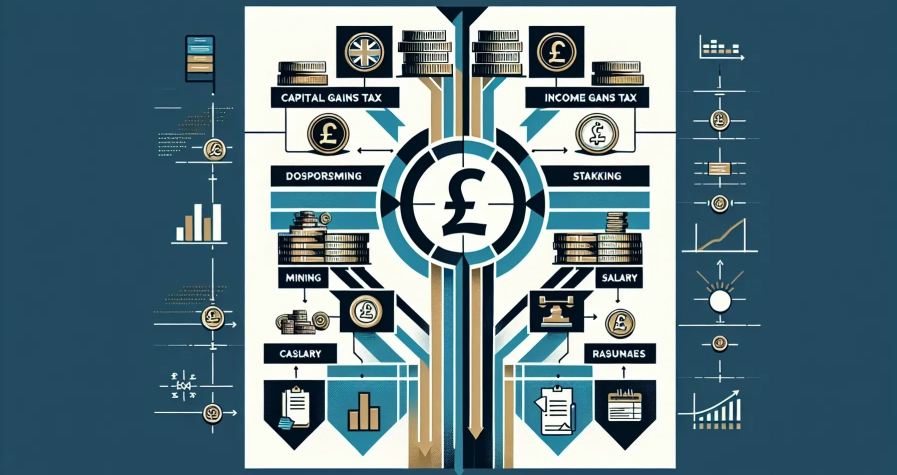You’ve decided to dive into Bitcoin but aren’t sure where to start with storing your digital currency safely? Setting up a Bitcoin wallet is your first crucial step towards securing and managing your cryptocurrency investments. Whether you’re planning to buy your first Bitcoin or transfer existing funds from an exchange, having your own wallet gives you complete control over your digital assets.
Bitcoin wallets come in various forms – from mobile apps and desktop software to hardware devices and paper storage. Each type offers different levels of security and convenience depending on your needs and technical expertise. The setup process is straightforward once you understand the basics.
This comprehensive guide will walk you through everything you need to know about choosing and setting up your Bitcoin wallet. You’ll learn about different wallet types, essential security features and step-by-step instructions to get your wallet running safely and efficiently.
What Is a Bitcoin Wallet and Why Do You Need One?
A Bitcoin wallet functions as a digital container that stores your private keys rather than actual bitcoins themselves. These private keys represent cryptographic codes that prove ownership of specific amounts of Bitcoin recorded on the blockchain network. Think of your wallet as a secure keychain that grants access to your cryptocurrency holdings.
Bitcoin wallets serve two primary functions: storing your private keys securely and broadcasting transactions to the Bitcoin network. When you receive Bitcoin, the transaction gets recorded on the blockchain with your wallet’s public address. Your private key remains the only method to access and spend those funds.
Key Functions of Bitcoin Wallets
| Function | Description | Security Level |
|---|---|---|
| Private key storage | Stores cryptographic keys offline or online | Varies by wallet type |
| Transaction signing | Authorises outgoing Bitcoin payments | High encryption required |
| Address generation | Creates unique receiving addresses | Automatic process |
| Balance tracking | Monitors incoming and outgoing transactions | Real-time blockchain sync |
You need a Bitcoin wallet before purchasing, receiving, or sending any cryptocurrency. Without a wallet, you cannot interact with the Bitcoin network or maintain control over your digital assets. Exchanges and trading platforms provide custodial wallets, but these give third parties control over your private keys.
Essential Reasons for Having Your Own Wallet
Control over your Bitcoin requires personal custody of your private keys. When you store Bitcoin on an exchange, that platform controls your funds and can freeze your account or restrict access. Personal wallets eliminate this risk by putting you in complete control.
Security improves significantly when you manage your own wallet compared to leaving funds on exchanges. Major cryptocurrency exchanges have suffered security breaches resulting in millions of pounds worth of Bitcoin theft. Personal wallets, particularly hardware devices, provide superior protection against hacking attempts.
Privacy becomes enhanced through personal wallet usage since you don’t share transaction data with third-party services. Exchange accounts require identity verification and track all your Bitcoin movements. Personal wallets allow pseudonymous transactions that maintain your financial privacy.
Your Bitcoin wallet enables participation in the decentralised Bitcoin ecosystem without relying on intermediaries. This independence aligns with Bitcoin’s core principle of peer-to-peer digital currency that operates without central authorities or trusted third parties.
Types of Bitcoin Wallets Available
Bitcoin wallets come in various forms, each offering different levels of security and convenience for your digital currency storage needs. Understanding these wallet types helps you make an informed decision based on your specific requirements and usage patterns.
Hot Wallets vs Cold Wallets
Hot wallets maintain constant internet connectivity, enabling quick and convenient Bitcoin transactions for daily use. These software-based solutions include mobile apps and desktop programmes that allow instant sending and receiving of Bitcoin but remain vulnerable to online threats such as hacking attempts and malware attacks.
Cold wallets store your private keys completely offline, providing maximum security for your Bitcoin holdings. These offline storage solutions include hardware devices and paper wallets that disconnect from the internet, making them virtually immune to cyber attacks but less convenient for frequent transactions.
The primary trade-off between hot and cold storage involves balancing accessibility with security. Hot wallets excel for active trading and regular transactions, whilst cold wallets serve best for long-term Bitcoin storage and large holdings.
Mobile Wallets
Mobile wallets function as smartphone applications that provide convenient Bitcoin access through your device’s touchscreen interface. These apps store your private keys on your phone and enable Bitcoin transactions through simple taps and swipes.
Popular mobile wallet features include:
- QR code scanning for easy address entry
- Biometric authentication through fingerprint or face recognition
- Push notifications for incoming transactions
- Integration with phone contacts for easy sending
Setting up mobile wallets involves downloading the app from official app stores, creating your wallet account, and securely backing up your recovery seed phrase offline. Mobile wallets suit users who prioritise convenience and need regular Bitcoin access for payments and transfers.
Desktop Wallets
Desktop wallets operate as software programmes installed directly on your computer, offering enhanced security compared to mobile alternatives whilst maintaining internet connectivity. These applications provide full control over your private keys and often include advanced features for experienced users.
Desktop wallet advantages include:
- Larger screen interface for easier navigation
- Enhanced security through computer firewalls and antivirus protection
- Advanced transaction fee customisation options
- Multiple wallet management capabilities
Installation requires downloading the official software from the wallet provider’s website, creating your wallet, and backing up your seed phrase to a secure offline location. Desktop wallets work best for users who conduct Bitcoin transactions primarily from their computers.
Hardware Wallets
Hardware wallets utilise physical devices resembling USB drives to store your private keys completely offline. These dedicated security devices connect to your computer only when conducting transactions, then disconnect for maximum protection.
Leading hardware wallet brands include Ledger and Trezor, which offer:
- Secure element chips for key storage
- PIN protection against physical theft
- Recovery seed phrase backup systems
- Multi-currency support beyond Bitcoin
Setup involves unboxing the device, initialising the wallet software, writing down your recovery seed phrase on paper, and confirming the phrase accuracy. Hardware wallets represent the gold standard for Bitcoin security and suit users holding significant Bitcoin amounts.
Paper Wallets
Paper wallets consist of physical documents containing your Bitcoin private keys or seed phrases printed or written on paper. These completely offline storage methods cost virtually nothing to create and remain immune to digital attacks.
Paper wallet components include:
- Private key printed as text or QR code
- Public address for receiving Bitcoin
- Recovery seed phrase written by hand
- Optional tamper-evident features
Creating paper wallets requires generating keys through offline software, printing the information on paper, and storing the document in a secure physical location. Paper wallets work for long-term storage but lack convenience for regular transactions and remain vulnerable to physical damage, loss, or theft.
Choosing the Right Bitcoin Wallet for Your Needs
Selecting the appropriate Bitcoin wallet depends on your specific requirements, security preferences, and transaction frequency. Your choice impacts both the safety of your digital assets and your daily Bitcoin management experience.
Security vs Convenience Trade-offs
Hardware wallets provide the highest security level by storing your private keys offline. These physical devices protect your Bitcoin from online threats, making them ideal for storing larger amounts long-term. However, they require purchasing dedicated hardware and involve more setup complexity.
Software wallets offer greater convenience for regular transactions through desktop or mobile applications. You can access your Bitcoin quickly for daily spending, but these hot wallets remain connected to the internet, increasing exposure to potential cyber threats.
Exchange wallets deliver maximum ease of use with instant access through trading platforms. You can buy, sell, and store Bitcoin without managing private keys, though this convenience means trusting a third party with your assets and personal information.
Usage Pattern Considerations
| Wallet Type | Best For | Security Level | Convenience |
|---|---|---|---|
| Hardware | Long-term storage, large amounts | Highest | Low |
| Software | Daily transactions, moderate amounts | Medium | High |
| Exchange | Frequent trading, small amounts | Lowest | Highest |
Frequent traders benefit from exchange wallets that integrate seamlessly with buying and selling activities. These platforms eliminate the need to transfer funds between separate wallets and exchanges.
Occasional users find software wallets provide the right balance between security and accessibility. You can store moderate amounts whilst maintaining control over your private keys.
Long-term holders require maximum security that only hardware wallets deliver. These devices protect substantial Bitcoin investments from online vulnerabilities whilst enabling secure transaction signing when needed.
Key Features to Evaluate
Multi-signature support adds extra security layers by requiring multiple approvals before transactions execute. This feature particularly benefits users managing shared funds or seeking additional protection.
Backup and recovery options determine how easily you can restore access if your device fails. Look for wallets offering secure seed phrase generation and clear recovery procedures.
User interface quality affects your daily interaction with the wallet. Beginners benefit from intuitive designs with clear navigation, whilst experienced users may prefer advanced features and customisation options.
Integration capabilities matter if you plan to connect with other Bitcoin services. Some wallets link directly to exchanges, payment processors, or DeFi platforms for enhanced functionality.
Beginner-Friendly Recommendations
Mobile software wallets with biometric authentication offer newcomers an accessible entry point. These applications combine reasonable security with familiar smartphone interfaces that most users already understand.
PIN protection provides additional security without overwhelming complexity. This feature prevents unauthorised access whilst maintaining quick transaction capabilities for regular use.
Built-in Bitcoin purchasing through integrated services simplifies the initial funding process. However, these features typically require identity verification through KYC procedures before activation.
Step-by-Step Guide to Setting Up Your First Bitcoin Wallet
Setting up your first Bitcoin wallet involves following specific procedures that vary depending on the wallet type you’ve selected. Each wallet type requires distinct installation steps and security configurations to ensure proper functionality and protection of your digital assets.
Creating a Mobile Bitcoin Wallet
Mobile Bitcoin wallets offer the quickest setup process among all wallet types. Download a trusted wallet application such as Trust Wallet or Xverse from your device’s official app store to begin the installation process.
Open the downloaded application and select “Create a new wallet” from the main menu. Accept the terms of service and privacy policy when prompted by the system. The application generates a 12-24 word seed phrase during the initial setup process – write down this recovery phrase immediately and store it securely offline in multiple physical locations.
Confirm your seed phrase accuracy by re-entering or selecting the correct words in the specified order. Set up additional security measures including a PIN code, password, or biometric authentication features like fingerprint scanning. Fund your newly created wallet by purchasing Bitcoin directly through the app’s integrated exchange features or transferring cryptocurrency from another existing wallet.
Setting Up a Desktop Bitcoin Wallet
Desktop wallet installation requires downloading software directly from the manufacturer’s official website to avoid malicious versions. Install the downloaded software on your computer and launch the application to begin the wallet creation process.
Select “Create a new wallet” from the startup options and carefully record the seed phrase provided during the setup sequence. Store this recovery phrase in a secure offline location separate from your computer to protect against hardware failures. Confirm the seed phrase by entering the words in the correct sequence as prompted by the software.
Configure a transaction PIN or password to protect wallet access during daily operations. Generate Bitcoin addresses through the wallet interface once setup completes – these addresses enable you to receive Bitcoin transfers from other users or exchanges.
Configuring a Hardware Wallet
Hardware wallets require physical device setup combined with companion software installation. Purchase your hardware wallet from trusted manufacturers like Ledger or Trezor through official channels to ensure device authenticity.
Connect the hardware device to your computer or mobile phone using the provided cable or follow wireless setup instructions for standalone devices. Initialise the device by creating a new wallet configuration, which includes setting a device PIN and installing the manufacturer’s companion application.
Write down your seed phrase on paper during the device setup process and store these recovery words in multiple secure offline locations. Confirm the seed phrase through the device interface to verify accurate recording. Select Bitcoin from the list of supported cryptocurrencies to enable Bitcoin management on your hardware wallet.
Your hardware wallet maintains private keys offline while enabling secure transaction signing through the connected companion application, providing maximum security for Bitcoin storage and transfers.
Securing Your Bitcoin Wallet
Proper security measures transform your Bitcoin wallet from a potential vulnerability into an impenetrable digital fortress. Implementing these protection strategies ensures your cryptocurrency remains safe from theft and unauthorised access.
Creating Strong Passwords and PINs
Strong passwords form the first line of defence against wallet compromises. Combine uppercase letters, lowercase letters, numbers, and special characters (!@#$%^&*) to create passwords with at least 12 characters. Examples include “Tr8$mK9pL#Wq” or “Zx7&nB4!vF2s”.
Avoid reusing passwords across multiple platforms, as breaches on other services can expose your wallet credentials. Each wallet requires a unique password that you haven’t used elsewhere.
PIN codes provide additional security layers for mobile and hardware wallets. Set PINs with 6-8 digits rather than simple sequences like “123456” or “0000”. Random combinations such as “847293” or “591768” offer better protection.
Biometric locks enhance security when available on your device. Fingerprint scanning and facial recognition create personalised access controls that criminals can’t replicate without physical access to you.
Backing Up Your Recovery Phrase
Recovery phrases serve as master keys to your Bitcoin wallet, typically consisting of 12 or 24 randomly generated words. Write these words on paper in the exact order provided by your wallet software, double-checking each word for accuracy.
Store physical copies in multiple secure locations such as fireproof safes, safety deposit boxes, or locked filing cabinets. Distribute copies across different geographical locations to protect against localised disasters like fires or floods.
Never store recovery phrases digitally in cloud storage, email accounts, or smartphone notes apps. Digital storage creates vulnerabilities that hackers can exploit to steal your entire Bitcoin holdings.
Verify your backup by restoring a test wallet using your written phrase before transferring significant Bitcoin amounts. This confirmation process ensures you’ve recorded the words correctly and can access your funds when needed.
Consider metal backup solutions for long-term storage, as these resist fire, water, and physical deterioration better than paper. Products like Cryptosteel or metal stamping kits provide permanent phrase storage.
Enabling Two-Factor Authentication
Two-factor authentication adds a second security layer that protects your wallet even when passwords are compromised. Download authentication apps like Google Authenticator, Authy, or Microsoft Authenticator to generate time-sensitive codes.
Link your wallet to the authentication app by scanning the QR code provided during setup. The app generates new 6-digit codes every 30 seconds that you’ll enter alongside your password when accessing your wallet.
Avoid SMS-based 2FA when possible, as mobile networks remain vulnerable to SIM-swapping attacks. Authentication apps provide superior security through offline code generation that criminals can’t intercept.
Backup your 2FA recovery codes immediately after enabling authentication. Store these codes separately from your recovery phrase in secure, offline locations to maintain access if you lose your authentication device.
Test your 2FA setup by logging out and back into your wallet using both your password and authentication code. This verification ensures the system works correctly before you rely on it for security.
Managing Your Bitcoin Wallet
Once you’ve secured your Bitcoin wallet with proper authentication and backup measures, you can begin conducting transactions and monitoring your digital assets. Managing your wallet involves understanding how to send and receive Bitcoin whilst keeping track of your transaction history and balance.
Sending and Receiving Bitcoin
Sending Bitcoin requires you to enter the recipient’s Bitcoin address and specify the amount you want to transfer. Copy the recipient’s public address carefully, as Bitcoin transactions are irreversible once confirmed. Enter the transaction amount in either Bitcoin units or your local currency equivalent, then approve the transaction using your private key, PIN, or biometric authentication. Your wallet signs the transaction digitally and broadcasts it to the Bitcoin network for verification by miners.
Receiving Bitcoin involves sharing your public Bitcoin address with the sender. Access your wallet’s receive function to display your current address or generate a new one for enhanced privacy. Many wallets create unique addresses for each transaction to protect your financial privacy. Share this address through QR codes for in-person transfers or copy the alphanumeric string for online transactions. Remember that your public address is safe to share, unlike your private keys which must remain confidential.
Transaction confirmation typically takes 10-30 minutes depending on network congestion and the fee you pay. Higher transaction fees generally result in faster confirmation times as miners prioritise transactions with better rewards.
Checking Your Balance and Transaction History
Your Bitcoin wallet displays your current balance by calculating all confirmed transactions on the blockchain. The balance updates automatically when new transactions receive network confirmations, though many wallet interfaces show incoming transactions instantly for convenience before full confirmation.
Transaction history provides a comprehensive record of all your Bitcoin activity within the wallet interface. View detailed information including:
- Transaction dates and timestamps
- Sent and received amounts
- Transaction fees paid
- Confirmation status
- Recipient or sender addresses
- Transaction IDs for blockchain verification
Most wallets organise transaction history chronologically, allowing you to filter by date ranges, transaction types, or amounts. Export features let you download transaction records for accounting purposes or tax reporting requirements. Some advanced wallets provide additional analytics showing spending patterns and balance trends over time.
Monitor your transaction history regularly to verify all activities and detect any unauthorised access attempts. Cross-reference wallet balances with blockchain explorers using your public addresses for additional verification if needed.
Common Mistakes to Avoid When Setting Up a Bitcoin Wallet
Leaving large balances on exchange wallets creates significant security vulnerabilities for your Bitcoin holdings. Exchanges remain prime targets for hackers due to their centralised nature and high-value cryptocurrency reserves. You’re essentially trusting a third party with your private keys when storing funds on exchange platforms. Hardware wallets provide superior protection for substantial Bitcoin amounts by keeping your private keys completely offline and away from internet-based threats.
Failing to enable two-factor authentication (2FA) on your wallet accounts dramatically increases the risk of unauthorised access to your funds. Authentication apps like Google Authenticator or Authy offer stronger security than SMS-based 2FA methods. You must activate 2FA immediately after creating any wallet account and securely backup the recovery codes provided during setup.
Ignoring wallet software updates exposes your Bitcoin to known security vulnerabilities that developers have already patched. Software updates often contain critical security fixes that protect against newly discovered threats and exploits. You must regularly check for and install updates from official sources to maintain optimal wallet security.
Not backing up your seed phrase represents the most costly mistake you can make during wallet setup. Your seed phrase serves as the master key to recover your Bitcoin if your device fails or becomes lost. Recording your seed phrase digitally creates opportunities for hackers to discover and steal your funds. Physical storage methods like writing the phrase on paper or metal plates provide the safest backup approach.
Sharing private keys or seed phrases with others immediately compromises your Bitcoin security and grants full access to your funds. Private keys function as mathematical proof of Bitcoin ownership, and anyone possessing them can transfer your entire balance without your knowledge or consent. You must never photograph, email, or digitally transmit your seed phrase or private keys under any circumstances.
Using unreliable or unofficial wallet software puts your Bitcoin at risk of theft through malicious code or poor security implementation. Fraudulent wallet applications often mimic legitimate wallets but contain hidden functions that steal user funds. You must download wallet software exclusively from official websites or verified app stores and research community recommendations before installation.
| Common Mistake | Risk Level | Primary Consequence |
|---|---|---|
| Leaving large balances on exchanges | High | Complete fund loss from hacking |
| Disabling 2FA | Medium | Unauthorised account access |
| Ignoring software updates | Medium | Vulnerability to known exploits |
| Not backing up seed phrase | Critical | Permanent Bitcoin loss |
| Sharing private keys | Critical | Immediate fund theft |
| Using unofficial wallet software | High | Malware infection and theft |
Storing seed phrases online where hackers can access them through cloud storage or digital documents eliminates the security benefits of personal wallet ownership. Physical storage in secure locations like safety deposit boxes or home safes provides optimal protection against both digital and physical threats. You must treat your seed phrase with the same security level as cash or valuable documents.
Conclusion
Setting up your Bitcoin wallet is just the beginning of your cryptocurrency journey. You now have the knowledge to choose the right wallet type for your needs and implement proper security measures to protect your digital assets.
Remember that wallet management is an ongoing responsibility. Regular updates software backups and vigilant monitoring of your transactions will keep your Bitcoin secure. The key to success lies in finding the right balance between security and convenience that matches your usage patterns.
Your Bitcoin wallet is your gateway to financial sovereignty. By taking control of your private keys and following best practices you’re participating in the decentralised future of money whilst protecting your investment for years to come.
Frequently Asked Questions
What is a Bitcoin wallet and how does it work?
A Bitcoin wallet is a digital container that securely stores your private keys—cryptographic codes proving ownership of Bitcoin on the blockchain. It functions by storing these private keys, broadcasting transactions to the Bitcoin network, generating addresses for receiving funds, and tracking your balance. Unlike physical wallets, it doesn’t store actual Bitcoin but rather the keys needed to access your Bitcoin on the blockchain.
What are the main types of Bitcoin wallets available?
There are four main types of Bitcoin wallets: mobile wallets (smartphone apps offering convenience), desktop wallets (computer software with enhanced security), hardware wallets (physical devices for maximum security), and paper wallets (printed keys for offline storage). They’re categorised as either hot wallets (internet-connected) or cold wallets (offline storage), each offering different levels of security and convenience.
How do I choose the right Bitcoin wallet for my needs?
Consider your usage patterns, security requirements, and technical expertise. For beginners making occasional transactions, mobile wallets with biometric authentication work well. For long-term storage of large amounts, hardware wallets offer maximum security. Frequent traders might prefer exchange wallets for convenience, whilst desktop wallets suit users wanting enhanced security for regular transactions.
What security measures should I implement for my Bitcoin wallet?
Create strong, unique passwords and PINs using a mix of characters. Always back up your recovery phrase and store it securely offline—never digitally. Enable two-factor authentication (2FA) using authentication apps rather than SMS. Keep your wallet software updated, never share private keys or seed phrases, and consider using hardware wallets for substantial amounts.
How do I send and receive Bitcoin using my wallet?
To send Bitcoin, enter the recipient’s public address, specify the amount, and confirm the transaction. Always double-check addresses as transactions are irreversible. To receive Bitcoin, share your public address with the sender—you can generate multiple addresses for privacy. Most wallets provide QR codes for easy address sharing and scanning.
What happens if I lose my seed phrase or forget my wallet password?
If you lose your seed phrase and forget your password, your Bitcoin becomes permanently inaccessible—there’s no recovery mechanism. This is why backing up your seed phrase is crucial. Store multiple copies in secure, physical locations away from digital devices. The seed phrase is your ultimate backup and the only way to restore wallet access.
Are exchange wallets safe for storing Bitcoin?
Exchange wallets are convenient for trading but less secure for long-term storage. They’re custodial wallets where the exchange controls your private keys, making them vulnerable to hacking and regulatory issues. Only keep small amounts needed for active trading on exchanges. For larger holdings, transfer Bitcoin to a personal wallet where you control the private keys.
How often should I update my Bitcoin wallet software?
Update your wallet software immediately when new versions become available. Updates often contain critical security patches that protect against known vulnerabilities. Enable automatic updates if possible, or regularly check the official website for new releases. Using outdated software exposes your wallet to security risks that hackers may exploit.
Can I use the same Bitcoin address multiple times?
Whilst you can reuse Bitcoin addresses, it’s not recommended for privacy reasons. Each transaction links to your address on the public blockchain, potentially revealing your transaction history. Most modern wallets automatically generate new addresses for each transaction. For better privacy and security, use a fresh address for each transaction you receive.
What’s the difference between hot and cold wallets?
Hot wallets are connected to the internet, offering convenience for frequent transactions but higher vulnerability to online threats. Examples include mobile and desktop wallets. Cold wallets store private keys offline, providing maximum security but less convenience. Hardware and paper wallets are cold storage options, ideal for long-term holding of substantial Bitcoin amounts.









